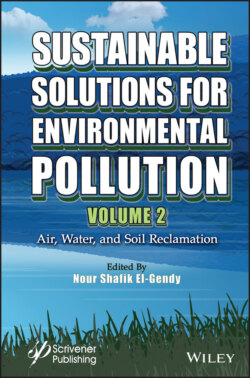Читать книгу Sustainable Solutions for Environmental Pollution, Volume 2 - Группа авторов - Страница 51
1.12 Nuisances 1.12.1 Greenhouse Gases (GHG)
ОглавлениеSome few studies directly measure GHG emissions from CWs by floating chambers or as their dissolved forms (Harrison et al., 2005; Clough et al., 2007; Beaulieu et al., 2008). Methane emissions from paddy fields contribute about 9% of total global anthropogenic emissions (Saunois et al., 2016). The magnitude of daily emissions varies from one study to another, from just a few µg/(m2 d) (Beaulieu et al., 2010) to around 5 mg/(m2 d) (Beaulieu et al., 2010) at around 5 mg/(m2 d) (Hinshaw and Dahlgren, 2013) for N2O and from less than 0.4 mg/(m2 d) to almost 200 mg/(m2 d) for methane; i.e., from about 0.5 ml/(m2 d) to about 270 ml/(m2 d) (Wilcock and Sorrell, 2008). However, to our knowledge, no study has evaluated these emissions over a complete hydrological cycle. In addition, several studies show that GHG emissions are strongly dependent on organic input for both methane (Maeck et al., 2013) and N2O (Lefebvre et al., 2004). Discharges of organic inputs, such as combined sewer overflow discharges, strongly condition these emissions. Vegetation helps to decrease GHG emissions and its maintenance should be carefully planned: decaying plant remnants increase GHG emissions as well as sediment disturbance induced by mechanical plant removal (Badiou et al., 2019). Methane can be transported from the sediment to the atmosphere by emergent and floating-leaved plants themselves: a higher conductance (by a factor of two) has been observed in floating-leaved plants (American lotus and water lily) than in Typha angustifolia L. (Villa et al., 2020). The influence of the type of vegetation is rarely considered and not incorporated in models.
